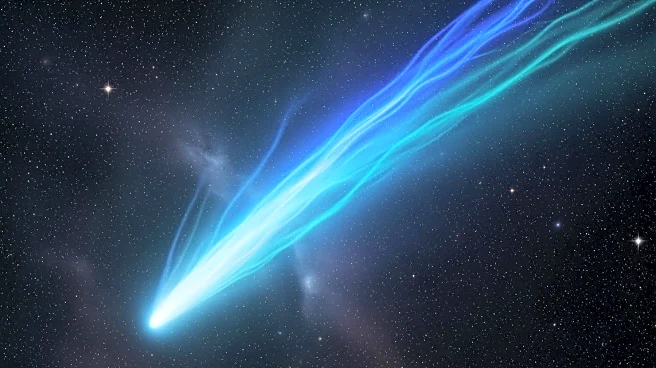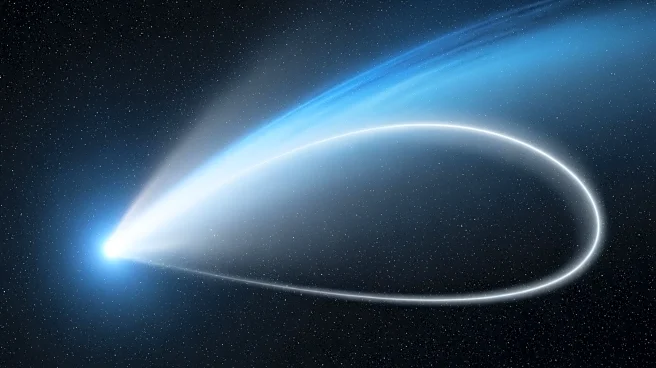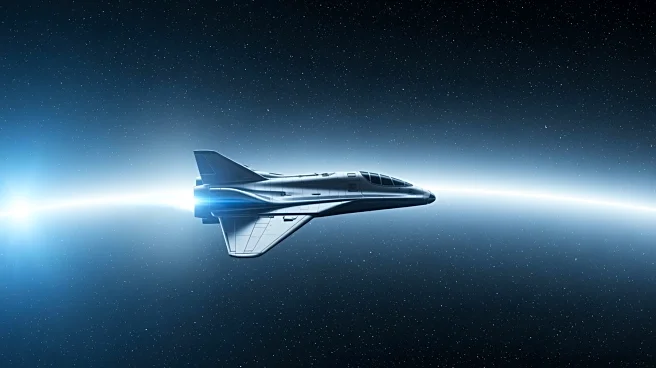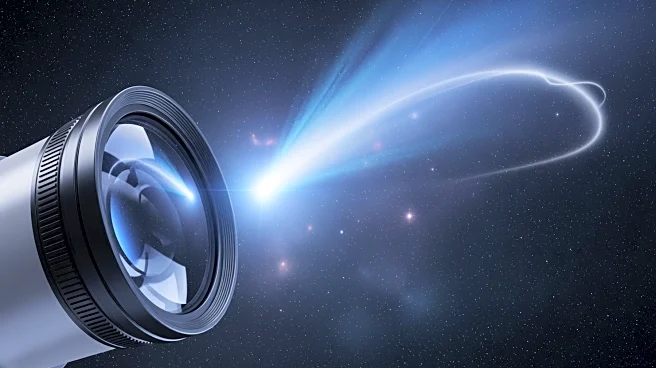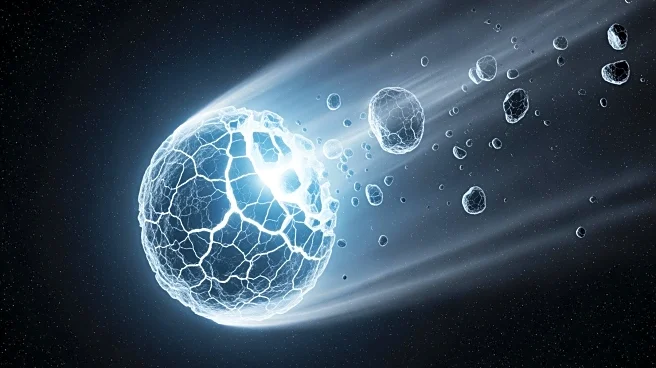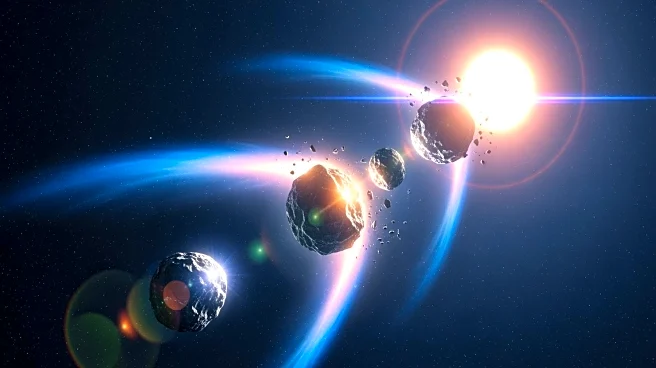What's Happening?
A new image of the interstellar comet 31/ATLAS has revealed significant changes in its ion tail, which has reappeared longer, brighter, and more structured than before. This observation was made by the Virtual
Telescope Project using robotic telescopes in Manciano, Italy. The image was captured despite challenging conditions, including the comet's low position in the sky and interference from a 61% illuminated Moon. The comet's ion tail had previously vanished after passing near the Sun, baffling astronomers. Harvard astrophysicist Avi Loeb noted that a significant portion of the comet's mass should appear as a tail, yet it was not visible at that time.
Why It's Important?
The reappearance of the ion tail of comet 31/ATLAS provides valuable insights into the behavior and characteristics of interstellar comets. Such observations can enhance understanding of cometary physics and the impact of solar interactions on comet structures. This development is significant for astronomers and astrophysicists studying the dynamics of celestial bodies and their interactions with solar winds. The findings could influence future research and observation strategies, potentially leading to new discoveries about the composition and evolution of interstellar objects.
What's Next?
Further observations and studies are likely to be conducted to understand the mechanisms behind the reappearance of the comet's ion tail. Astronomers may focus on analyzing the data collected from the Virtual Telescope Project to explore the comet's trajectory and its interaction with solar winds. These studies could lead to advancements in predicting the behavior of similar interstellar objects. Additionally, the scientific community may collaborate internationally to share findings and develop comprehensive models of cometary behavior.
Beyond the Headlines
The dramatic changes in the ion tail of comet 31/ATLAS highlight the unpredictable nature of interstellar objects and the challenges faced by astronomers in studying them. This event underscores the importance of technological advancements in telescopic equipment and observation techniques. It also raises questions about the potential for discovering new interstellar phenomena and the implications for understanding the universe's broader dynamics.
